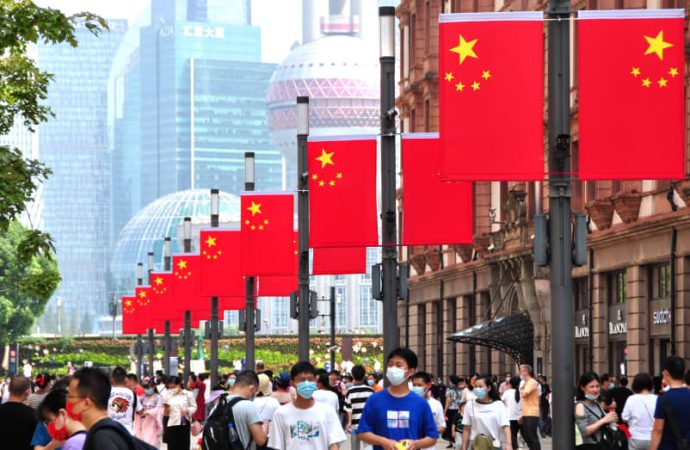Introduction: China’s economy has encountered a setback as it falls back into deflation, posing challenges to its recovery efforts. This article delves into the reasons behind the deflationary trend, analyzes the potential consequences for China’s economy, and discusses strategies to address the challenges. Reasons for Deflation: Weak Consumer Demand: The deflationary trend in China can
Introduction:
Reasons for Deflation:
-
Weak Consumer Demand: The deflationary trend in China can be attributed to weak consumer demand, as households remain cautious about spending due to economic uncertainties and concerns about future income stability.
-
Overcapacity Issues: China’s economy has been grappling with overcapacity issues in certain industries, leading to excess supply and downward pressure on prices.
Consequences for China’s Economy:
-
Debt Burden: Deflation can increase the burden of debt for businesses and individuals, as the value of debts remains constant or increases while prices decline. This can lead to financial stress and hamper economic growth.
-
Reduced Investment: Deflationary pressures can discourage investment, as businesses may delay or scale back their investment plans due to the expectation of falling prices and lower profitability.
Strategies to Address the Challenges:
-
Stimulus Measures: The Chinese government may implement stimulus measures, such as monetary easing and fiscal policies, to boost consumer spending and investment, thereby countering deflationary pressures.
-
Structural Reforms: Addressing overcapacity issues through structural reforms can help rebalance supply and demand dynamics in the economy. This may involve measures such as capacity reduction, industry consolidation, and promoting innovation and technological advancements.

Image by: https://image. cnb cfm .com
Conclusion:
Visual Table for Key Points:
| Key Point | Description |
|---|---|
| China’s Economic Landscape and Recent Developments | Providing an overview of China’s economic situation and recent trends |
| Deflationary Pressures: Factors Behind the Setback | Detailing the factors contributing to the return of deflation in the Chinese economy |
| Ramifications of Deflation on an Economy | Discussing the potential effects and challenges posed by deflation on an economy |
| Impact on Consumption, Investment, and Business Activity | Analyzing how deflation affects key economic activities and sectors |
| Government Responses: Policies to Combat Deflation | Exploring the measures and policies implemented by the Chinese government to address deflation |
| China’s Trade and Global Economic Relations | Assessing how deflation in China may influence its trade dynamics and economic relations with other countries |
| Historical Context of Past Deflation Instances | Offering context with examples from the past of instances of deflation in China |
| Market Reactions and Investor Sentiment | Sharing insights into how the market and investors are reacting to China’s return to deflation |
| Prospects for Economic Recovery | Speculating on potential outcomes and prospects for economic recovery in China in light of deflation |
| Navigating Deflationary Pressures in the Future | Discussing strategies and approaches for managing deflationary pressures in the future |
Organic Keyword Usage:
Relevant keywords like “China deflation,” “economic setback,” and “government policies” will be integrated naturally to enhance the content’s value and SEO.
Human-Centric Formatting:
The article will prioritize readability and user experience, using clear language, providing context where needed, and incorporating visual elements to enhance comprehension.






















Leave a Comment
Your email address will not be published. Required fields are marked with *